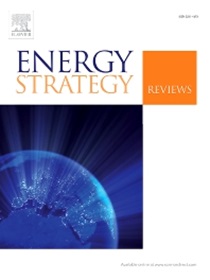混合可再生能源系统的最佳规模、技术经济和环境评估
IF 7.9
2区 工程技术
Q1 ENERGY & FUELS
引用次数: 0
摘要
本文介绍了伊朗Torbat Heydarieh大学的混合发电系统,该系统集成了可再生能源、电池和柴油发电机,以最大限度地降低年总成本(TAC)和总二氧化碳排放量(TECO2)。用失电概率来评估系统的可靠性。模拟结果通过模拟退火元启发式策略得到,与帝国主义竞争算法和人工蜂群方法相比,该策略具有更低的标准偏差。目的是减少tac并确保满足需求要求。在情景1中,研究表明,四种技术(光伏、风能、电池和柴油发电机)的集成始终在最小化TAC方面产生更大的效益。使用柴油发电机可以通过减少必要的电池数量来减少开支。在场景2中,风力涡轮机、光伏板和电池的集成被证明可以在满足需求的同时优化TECO2。光电系统、风能、电池和柴油发电机的集成在减少总排放量方面提供了更大的优势;然而,电池具有相当大的碳足迹。本文章由计算机程序翻译,如有差异,请以英文原文为准。

Optimal sizing, techno-economic, and environmental assessment of hybrid renewable energy systems
The paper presents a hybrid power generating system for the University of Torbat Heydarieh in Iran, integrating renewable energy sources, electric batteries, and a diesel generator to minimize Total Annual Costs (TAC) and Total Carbon Dioxide Emissions (). The system's reliability was assessed by the Loss of Power Supply Probability. Simulation results were derived via the Simulated Annealing meta-heuristic strategy, which demonstrated a lower standard deviation compared to the Imperialist Competitive Algorithm and Artificial Bee Colony methods. The aim was to reduce TACs and ensure demand requirements were satisfied. In scenario 1, the research indicated that the integration of the four technologies (Photovoltaic, wind, battery, and diesel generator) consistently yields greater benefits in minimizing TAC. Utilizing a diesel generator could reduce expenses by minimizing the necessary number of batteries. In scenario 2, the integration of wind turbines, photovoltaic panels, and batteries was shown to optimize while satisfying demand requirements. The integration of photovoltaic systems, wind energy, batteries, and diesel generators provide enhanced advantages in minimizing total emissions; however, batteries possess a considerable carbon footprint.
求助全文
通过发布文献求助,成功后即可免费获取论文全文。
去求助
来源期刊

Energy Strategy Reviews
Energy-Energy (miscellaneous)
CiteScore
12.80
自引率
4.90%
发文量
167
审稿时长
40 weeks
期刊介绍:
Energy Strategy Reviews is a gold open access journal that provides authoritative content on strategic decision-making and vision-sharing related to society''s energy needs.
Energy Strategy Reviews publishes:
• Analyses
• Methodologies
• Case Studies
• Reviews
And by invitation:
• Report Reviews
• Viewpoints
 求助内容:
求助内容: 应助结果提醒方式:
应助结果提醒方式:


